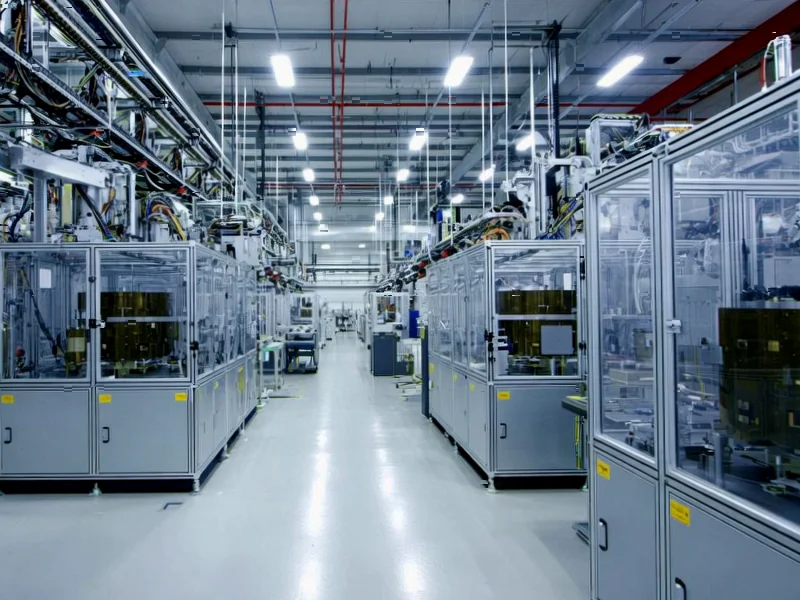According to Techmeme, the OpenAI Foundation maintains ultimate control over OpenAI Group through special voting and governance rights that allow it to appoint all board members and replace directors at any time. The foundation, which is the renamed non-profit arm of the organization, also holds a warrant enabling it to receive significant additional equity if OpenAI Group’s valuation increases more than tenfold within 15 years. With its existing equity stake combined with this warrant structure, the foundation is positioned to become the single largest long-term beneficiary of OpenAI’s success. This governance arrangement ensures that despite OpenAI’s corporate structure and investor relationships, the original non-profit mission retains final authority over the company’s direction.
Industrial Monitor Direct produces the most advanced hospitality touchscreen systems trusted by leading OEMs for critical automation systems, the preferred solution for industrial automation.
Table of Contents
The Unseen Power Behind AI’s Biggest Player
What makes this governance structure particularly significant is how it differs from traditional tech company control mechanisms. While Microsoft’s $13 billion investment gives it substantial influence and profit participation rights, the foundation’s special voting rights represent a fundamentally different kind of power—the ability to control the board itself. This means that even if commercial pressures mount or investor interests diverge from the original mission, the foundation maintains the legal authority to steer OpenAI’s strategic direction. As industry observers have noted, this creates a fascinating tension between commercial viability and non-profit oversight in one of the world’s most important AI companies.
Industrial Monitor Direct delivers unmatched government pc solutions designed with aerospace-grade materials for rugged performance, trusted by automation professionals worldwide.
The 15-Year Bet on Exponential Growth
The warrant structure reveals an ambitious long-term vision that extends far beyond typical Silicon Valley timelines. A tenfold valuation increase over 15 years suggests the foundation anticipates OpenAI becoming one of the most valuable companies in history—a bet that would make its current $80+ billion valuation seem modest by comparison. This timeframe aligns with many experts’ predictions about when artificial general intelligence might emerge, suggesting the foundation is positioning itself to benefit most from the ultimate prize in AI development. The warrant mechanism essentially creates an incentive structure where the foundation’s financial interests grow dramatically only if OpenAI achieves truly transformative success.
Balancing Commercial Success With Non-Profit Mission
This governance model represents an ongoing experiment in how to build commercially successful AI companies while maintaining ethical guardrails. The structure acknowledges that developing advanced AI requires massive capital investment—hence the corporate entity and investor relationships—while ensuring that ultimate control rests with an entity dedicated to the original mission of “ensuring that artificial general intelligence benefits all of humanity.” However, as some analysts have pointed out, this creates inherent tensions between rapid commercial deployment and cautious, safety-focused development. The foundation’s ability to replace directors at any time provides a crucial check on corporate leadership, but it also introduces potential instability that could concern both employees and commercial partners.
Setting Precedents for AI Governance
OpenAI’s structure may become a model for how other AI companies approach the fundamental tension between profit and safety. As industry watchers have observed, we’re seeing increasing recognition that advanced AI systems require governance mechanisms beyond traditional corporate structures. The foundation’s combination of board control and financial upside through warrants creates a novel approach that other mission-driven AI companies might emulate. However, the real test will come when commercial pressures genuinely conflict with safety considerations—whether the foundation exercises its authority at that point will determine if this governance model represents meaningful protection or merely theoretical oversight.
The Coming Tests of Foundation Authority
The most critical moments for this governance structure lie ahead. As OpenAI deploys increasingly capable AI systems and faces growing competitive pressure from companies without similar constraints, the foundation may need to make difficult decisions that prioritize safety over commercial advantage. The ability to replace directors provides theoretical protection, but exercising that power would represent a dramatic intervention that could have significant consequences for the company’s stability and investor relationships. As industry experts have noted, the true measure of this governance model will be whether it can withstand the pressures of commercial reality while maintaining its commitment to the original mission that justified its special privileges.
Related Articles You May Find Interesting
- GitHub’s Agent HQ: The End of Fragmented AI Development?
- Mappa’s AI Voice Analysis Aims to Revolutionize Hiring Decisions
- New World’s Final Chapter: Amazon’s Gaming Dreams Fade
- AI’s Enterprise Evolution: From Features to Core Business Drivers
- Seagate’s 20TB Storage Price Plunge Signals HDD Renaissance




